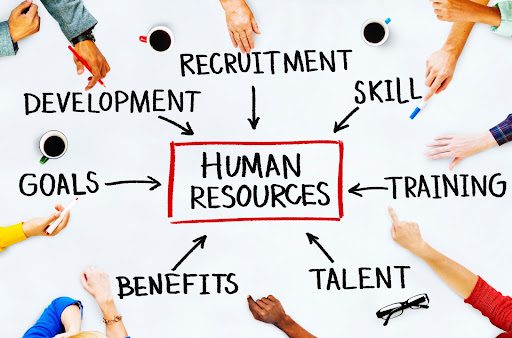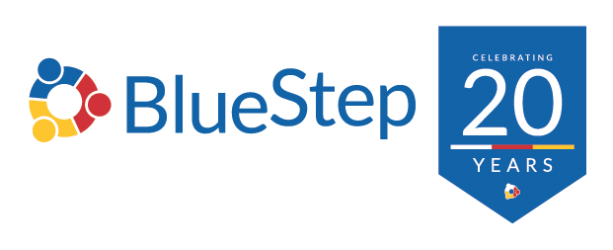In today’s fast-paced, ever-evolving workplace landscape, the significance of HR compliance has never been more crucial. Organizations are continually navigating a complex web of laws, regulations, and ethical standards to ensure their employment practices are lawful and equitable.
Amidst all this, the intersection of human resources, HR compliance, and employee mental health is a critical area that requires attention. This blog post explores the right behavioral health system’s pivotal role in ensuring HR compliance while fostering a supportive and thriving workforce.
Join us as we delve into this dynamic relationship’s legal, ethical, and practical dimensions, and how the right behavioral health system helps with HR compliance.
Let’s get started by understanding exactly what HR compliance entails.
Understanding HR Compliance
HR is an abbreviation for Human Resources. Human resources is designed to create a bridge between an organization’s leadership and its employees, ensuring that the workforce is effectively managed, motivated, and empowered to contribute to the organization’s success while adhering to legal and ethical standards.
HR compliance refers to an organization’s commitment to abide by the complex rules and regulations governing the employer-employee relationship. HR compliance encompasses everything from hiring practices to employee benefits. Ultimately, HR compliance is designed to safeguard employees and organizations from the legal and financial pitfalls that no organization wants to face.
When we delve into HR compliance, we enter a world rife with federal, state, and local regulations, not to mention industry-specific rules. Some of the pivotal regulations and laws tied to HR compliance in the United States include:
- Title VII of the Civil Rights Act: This federal law strictly prohibits discrimination in employment based on factors like race, religion, sex, color, or national origin.
- Fair Labor Standards Act (FLSA): The FLSA lays down the groundwork for minimum wage, overtime pay, and child labor standards for U.S. employees.
- Americans With Disabilities Act (ADA): The ADA bars employment discrimination against qualified individuals with disabilities and mandates reasonable accommodations for disabled employees.
- Family and Medical Leave Act (FMLA): FMLA ensures eligible employees can take unpaid, job-protected leave for specific family or medical reasons without worrying about job security.
- Occupational Safety and Health Act (OSHA): OSHA stands as a guardian of workplace safety and health, setting vital standards to protect employees.
- Equal Pay Act: This legislation requires equal pay for equal work, irrespective of gender.
- Age Discrimination in Employment Act (ADEA): ADEA shields workers aged 40 or older from age-based employment discrimination.
- National Labor Relations Act (NLRA): NLRA safeguards employees’ rights to engage in collective bargaining and other concerted activities for mutual benefit.
- Whistleblower Protection Laws: Several laws are in place to protect employees who report unlawful or unethical practices within their organizations.
These are just a selection of regulations; there are far more encompassing every topic you could imagine. Understanding and upholding these laws to ensure ethical employment practices while avoiding potential legal repercussions is crucial.

Failure to comply with HR regulations can result in a range of serious consequences for organizations. Here are some potential outcomes:
- Legal Penalties: Non-compliance may lead to fines, lawsuits, and significant legal expenses. Both government agencies and individuals have the right to sue organizations for violations of employment laws. This means that the government and the individual employee whose rights were violated could separately sue an organization for non-compliance.
- Reputation Damage: Non-compliance can tarnish an organization’s reputation, making it less appealing to potential employees, customers, and investors. Knowing an organization has failed to comply with important laws decreases the desire to work with them.
- Financial Loss: The costs associated with legal penalties, settlements, and increased insurance premiums can substantially impact an organization. This is especially true if an organization is doubly sued by the government and an individual.
- Employee Discontent: Violations of employment laws can lead to employee dissatisfaction, lowered morale, and increased turnover. This can lead to the organization developing a negative reputation and having a hard time recruiting new employees.
- Loss of Talent: Discrimination or harassment claims could result in the loss of valuable employees, and replacing them is often costly — and, as we mentioned in the last point — difficult.
- Regulatory Scrutiny: Non-compliance invites heightened regulatory attention, including audits and ongoing oversight by government agencies. It’s stressful having continual oversight; it’s much easier to get things right on your own.
So, as you can see, it’s essential to follow all applicable laws and regulations as you run your organization. One way to help you comply is by implementing a behavioral health system. In this next section, we’re exploring how to go about that to help you get started.
Implementing a Behavioral Health System
Assess How Your Employees are Doing:
Before implementing a behavioral health program, it’s crucial to gain a clear understanding of the existing well-being of your employees. This involves conducting surveys, collecting data on absenteeism and turnover, and engaging in open and confidential discussions with employees.
Look for trends and patterns that may indicate areas of concern, such as stress, anxiety, or depression. Identifying these issues early on can guide your program’s focus and help tailor interventions to specific needs.
Identifying Behavioral Health Resources and Providers:
Once you’ve assessed the well-being of your employees, the next step is to identify suitable behavioral health resources and providers.
This may involve partnering with local mental health clinics, EAPs (Employee Assistance Programs), or telehealth services that offer counseling and therapy.
Ensure that these providers have the necessary expertise and experience in addressing workplace-related behavioral health issues. Establishing these partnerships is essential for providing accessible and effective support to employees.
Developing Policies and Procedures:
To successfully integrate behavioral health into your workplace, you’ll need to create clear and comprehensive policies and procedures. These should cover a range of topics, including:
- Confidentiality: Outline how employee information will be kept confidential to encourage trust and participation in the program.
- Access: Define how employees can access behavioral health services, whether through in-person counseling, telehealth, or other channels.
- Communication: Establish a communication plan to inform employees about the program, emphasizing its importance and the available resources.
- Training: Train HR staff, managers, and supervisors on recognizing signs of distress and appropriately referring employees to the program.
- Integration: Ensure that the behavioral health program is integrated with other HR policies and benefits, such as FMLA and ADA accommodations.
- Evaluation: Set up mechanisms to continually assess the program’s effectiveness and gather feedback from employees for ongoing improvements.

Measuring the Impact on HR Compliance
As you work with the right resources and providers, you’ll want to measure their impact on HR compliance. Methods for measuring this impact include tracking absenteeism and turnover rates, employee feedback and surveys, and compliance audit results.
Tracking Absenteeism and Turnover Rates:
One of the most tangible indicators of a behavioral health program’s impact on HR compliance is the reduction in absenteeism and turnover rates.
High levels of absenteeism and frequent turnover might indicate underlying employee well-being issues. By tracking these rates before and after the implementation of the program, organizations can assess whether the program has had a positive effect on reducing employee turnover and absenteeism.
For example, if an organization historically had a 20% annual turnover rate and, after implementing the program, it drops to 10%, it suggests that the program may be contributing to improved HR compliance by creating a healthier and more stable workforce.
Employee Feedback and Surveys:
Collecting feedback directly from employees through surveys and feedback mechanisms is essential for evaluating the program’s effectiveness. These surveys should include questions about employees’ perception of the program, whether they feel supported in their mental health needs, and if they believe the workplace has become more accommodating.
Positive feedback and improved employee perceptions regarding mental health support indicate that the program is positively impacting HR compliance by fostering a more inclusive and supportive work environment.
Compliance Audit Results:
Organizations can conduct compliance audits to evaluate how well they are adhering to HR compliance standards before and after implementing a behavioral health program.
Improvement in compliance audit results after the implementation of the program can be a strong indicator of its effectiveness in enhancing HR compliance.
Upgrade Your Behavioral Health System With BlueStep Systems
As organizations increasingly recognize the significance of behavioral health programs in fostering employee well-being, enhancing human resources and HR compliance, and the need for a reliable and comprehensive solution becomes evident.
That’s where BlueStep Systems comes into play as your go-to Behavioral Health web-based solution. With its cutting-edge platform, BlueStep Systems offers a holistic approach to addressing employee mental health, ensuring legal compliance, and promoting a culture of well-being within your organization.
From streamlined tracking of absenteeism and turnover rates to gathering real-time employee feedback through intuitive surveys, BlueStep Systems provides the data-driven insights needed to assess the effectiveness of your behavioral health program.
Moreover, it seamlessly integrates with compliance audits, enhancing your organization’s adherence to vital regulations like ADA and FMLA. BlueStep Systems isn’t just a solution; it’s a strategic partner in your journey toward a healthier, more compliant, and thriving workforce.
Want to learn more about what BlueStep Systems can do for your behavioral health system? Request a demo today! We’ll be happy to show you everything BlueStep Systems has to offer!


